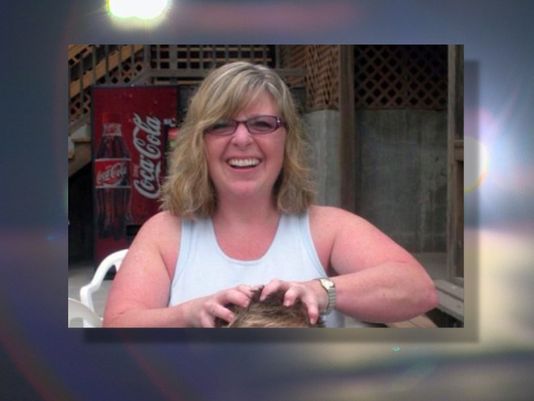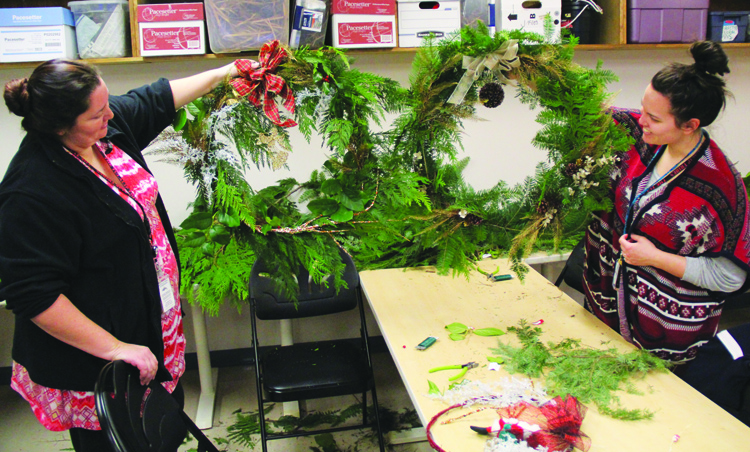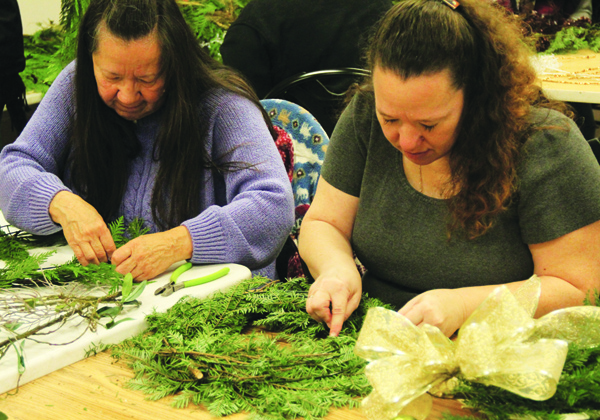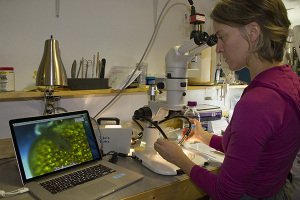The shooting at Marysville Pilchuck High has had a devastating effect on the families of the victims, the students who survived, and on the communities of Marysville and Tulalip.
By Stephanie A. Fryberg, Guest Opinion to the Seattle Times
THESE days when I shop in Marysville, I pay cash. My last name on my credit card attracts so many odd looks and awkward questions that I would rather save us all the discomfort.
As an American Indian social psychologist who studies how culture and race influence how people relate to one another, I am used to uncomfortable questions. But the school shooting on Oct. 24 changed everything. On that day, a member of my family, who also carried the Fryberg name, killed four of his Marysville Pilchuck High School classmates, one of whom was my cousin, and seriously wounded another, who was also my cousin, before turning the gun on himself.
This is one of the worst school shootings since Sandy Hook in 2012, and so the first question many people ask is: Why did this young man commit such a horrific act?
While research suggests that teenagers who engage in acts of violence toward others and themselves are dealing with a deep level of emotional pain, the reality is that we may never fully understand the complex set of factors that coalesced in this horrific event. What we do know is that this tragedy has devastated the families of the victims, the students who survived the incident, and the communities of Marysville and Tulalip.
We have been forever changed.
As a member of the Tulalip crisis-response team, a Fryberg, and a Tulalip tribal member, I have spent nearly every waking minute since the tragedy thinking about what it means that this shooting happened in our communities, what we can learn from it and how we can move forward.
Such a tragedy is unspeakable wherever it occurs. But, in this case, the dynamics of the Tulalip Tribes, the Fryberg family and the Marysville-Tulalip communities are intricately tied to the heavy silence that ensued.
While I do not presume to speak for all members of my family, tribe or community, this tragedy made me more aware than ever of the complexity of identities, the vulnerability of families and communities, and the many obstacles we need to overcome before we can heal and move forward.
When I left the Tulalip Indian Reservation, where I grew up, to go away to college and then to graduate school, I began to grasp just how little people know about contemporary American Indians. Turning my observations into research, I documented how mainstream American media offered two narrow representations of American Indians: noble savages, such as warrior chiefs and Indian princesses; and oppressed and damaged people plagued by social ills, such as depression and substance abuse.
These simple stereotypes contradict the complexity of the modern American Indian experience — a complexity that has made responding to this tragedy especially difficult. First, I am not just an American Indian, I am Coast Salish. And, I am not just Tulalip, I am Snohomish, which is one of the many tribes the U.S. government placed on the Tulalip Indian Reservation when “settling” the Pacific Northwest.
Indeed, there is no single Tulalip Tribe, but Tulalip Tribes, which include the Snohomish, Snoqualmie, Skykomish and other allied tribes. These tribes survived floods, disease, famine, government-run boarding schools, and state and federal policies that fostered hostility and exclusion. We survived by forging relationships both within our tribal community and with other communities across the country.
Second, as is true for most racial-ethnic minority groups, American Indians often live under a microscope, where the actions of one person are often viewed as representative of the whole group. Although generalizing about all American Indians is neither fair nor accurate, in the case of this tragedy, the difficulty is that we can denounce the shooter’s actions or try to distance ourselves from the event, but ultimately we cannot control the effect it may have on our relationships with others.
The response following the tragedy highlights this complexity and fragility of relationships. Despite widespread agreement that the school shooting was horrific, the Tulalip Tribes took five days to develop an “official” response to the shooting. The slow response is tied to our fundamental interdependence, and to the ways in which our relationships bind us to our past, present and future. The guiding principle is that words can impact family and community relationships for generations. The tribes’ leadership appropriately sought consensus on a shared response to the tragedy. Unfortunately, in the midst of such a horrific tragedy, consensus takes time to formulate.
The community tension surrounding how to discuss the tragedy further amplified this complexity. Unlike other school shootings, where the shooter’s family often leaves the community, we knew the opposite would be true here.
Tribal leaders and elders encourage tribal members to be careful in what they say about the tragedy so as not to hinder the integration of all affected families back into our schools, workspaces and community gatherings. And so what to call the tragedy and how to discuss the shooter’s actions became sources of great contention. For instance, the terms used to characterize this tragedy in other communities — murder, mass murder, premeditated mass murder — continue to be relatively absent in our public conversations.
At the same time, there are members of the community who worry that if we do not use these terms — if we do not tell it like it is — our youths will perceive the adults as sweeping the tragedy under the proverbial rug or, worse, as glorifying or honoring the tragedy.
Additionally, as recent public statements by families of the victims indicate, the silencing of honest conversation, including the relative absence of these terms, is also detrimental to those who have been hurt most by this tragedy. These concerns and their possible consequences saturate our every breath as we try to bring our communities and families together.
The shooting also revealed the complexities and fragilities of my family. As the media keep reporting, the Fryberg family is a “large and prominent family.”
“Large” is an understatement.
More than 800 Frybergs live on or near the Tulalip Indian Reservation. Yet, despite our size, family members are expected to uphold the family name and traditions. The shooting not only dishonored the Fryberg name, it fractured the delicate alliances among family members and between different lines of the Fryberg family.
Immediately following the tragedy, some Frybergs tried to support all three affected family lines. But as more information emerged about the shooting, the prognosis of the victims, and the other young family members who were potential targets, the familial divides deepened.
The issue was not simply the shooter’s family versus the victim’s families; the tragedy triggered past hardships and sorrow. As a result, amid profound grief and upheaval, family members voiced their disagreements, scrutinized each other’s actions, and ultimately drew lines and chose sides.
As a member of the Fryberg family, I feel a deep sense of collective responsibility for this tragedy and for how my family and community responded. Shortly after the shooting, I dreamed about my ancestors visiting the family, shaming us for failing to uphold the family name, and for not coming together following this tragedy.
Upon waking, I realized that I am not just mourning the tragic loss of these precious young people, I am grieving for all our past elders and tribal leaders who struggled and suffered in the name of our family and tribal community. To non-Natives, these feelings of collective responsibility may seem neither useful nor healthy. But to me and to many other members of my family and tribe, they are normal and natural. These emotions are the glue that binds who we were in the past to who we are and who we will be in the future.
Many family members — myself included — derive solace and meaning from the belief that the acts of one person not only impact us all, but also reflect us all — for better and for worse.
This tragedy also highlights the complex and fragile relationship between Marysville and Tulalip. Most relationships between Indian reservations and neighboring towns are marked by historically accumulated conflict and distrust. In contrast, Tulalip and Marysville have a history of trying to work together for the betterment of our children and communities. This has been particularly true the past 10 to 15 years.
Immediately following the shooting, the mayor of Marysville, the chairman of the Tulalip Tribes and the superintendent of the Marysville School District stood side by side at the first media briefing, and they or members of their councils have continued to do so at every public event thereafter. Reflecting the fragility of this relationship, communications from both sides have been cautious in their response because of our mutual desire not to offend or misrepresent the other. Now, as we work to accept the realities of the shooting, the leaders of both Marysville and Tulalip step lightly knowing that this tragedy will continue to test our unity.
For all my thinking about identities, relationships and communities, I cannot answer the question those who see my last name on my credit card want to ask: Why did my family member commit this horrific act?
I would give anything to turn back the clock and stop this tragedy, and I suspect all members of my family, my tribe and the larger Marysville-Tulalip community feel the same way. But we cannot turn back the clock, so we must accept this new reality, learn from it, and figure out how together we will move forward and continue to build community with this tragedy as part of our joint history.
What I can help explain is the heavy silence of my family and tribe. The events of Oct. 24 brought us to our knees. We are struggling to understand why this happened, to support the survivors and the families of the victims, and to return a sense of safety and stability to our children and communities, even as we grapple with our own trauma.
As a Fryberg, a Snohomish, a Tulalip, an American Indian, an American and a human, I offer my deepest apologies to the survivors and the victims’ families who have lost so much, and to the people of Marysville, Tulalip, and beyond who were traumatized by yet another school shooting.
As we continue to mobilize to provide support and professional assistance to all our youths, parents and elders who are struggling with grief and trauma, we seek comfort in the fact that we are not alone in this tragedy. We have all survived centuries of emotional pain by bonding together and holding sacred our connections to our ancestors and to one another. I am extremely grateful to the many people who are working tirelessly to help our communities heal.
My hope is that we may one day regain the fragile peace we had struck before Oct. 24.
Stephanie A. Fryberg is an associate professor of American Indian Studies and Psychology at the University of Washington.


















